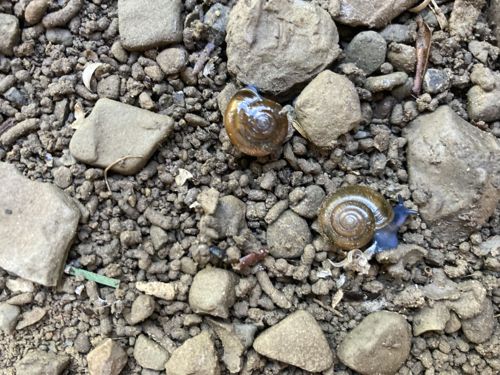Terrestrial Snail (Land Snail)
Scientific Name: Varies widely (e.g., "Helix aspersa" for garden snail, but specific species cannot be determined from the image)
Order & Family: Stylommatophora (Order) and various families exist depending on species (e.g., Helicidae, Bradybaenidae)
Size: Typically from a few millimeters to several centimeters in shell diameter, depending on the species. The snails in the image appear to be small, likely under 1-2 cm.

Natural Habitat
Moist, shaded areas with abundant vegetation and calcium sources; often found under rocks, logs, leaf litter, or in gardens and forests.
Diet & Feeding
Herbivorous or detritivorous. They primarily feed on decaying plant matter, fungi, algae, and tender new plant growth. Some species may eat small insects or other snails.
Behavior Patterns
Nocturnal or active during damp conditions to avoid desiccation. They move by gliding on a muscular foot, secreting mucus to aid movement and reduce friction. They are hermaphroditic, meaning each individual has both male and female reproductive organs, and typically lay eggs in moist soil.
Risks & Benefits
Potential risks include being garden pests due to feeding on cultivated plants. Some species can act as intermediate hosts for parasites that affect animals. Benefits include aiding in decomposition by breaking down organic matter, contributing to soil health, and serving as a food source for various predators (birds, small mammals, insects).
Identified on: 10/10/2025